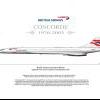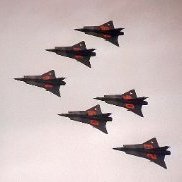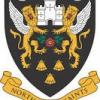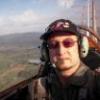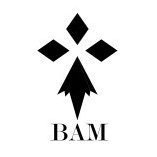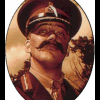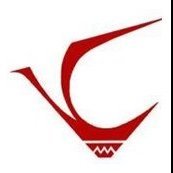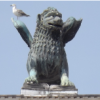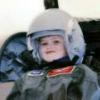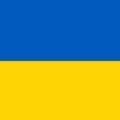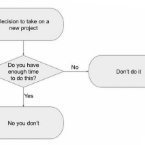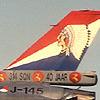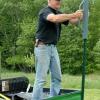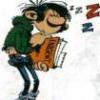Leaderboard
Popular Content
Showing content with the highest reputation on 27/07/13 in all areas
-
Hi all This is my latest kit off the production line, nice kit to build really love the Harrier. Many thanks to Richard E for the decals . Thanks for looking Al5 points
-
Thanks guys! Getting close to finishing this one up! Did the exhaust stains and some leaks/streaks. Still a little more to do Exhaust was done with Tamiya acrylics. Started with a Red-Brown and Nato black mix thinned with 91% isopropyl alcohol, about 9:1 thinner to paint. That was followed by German Grey closely behind the exhaust stacks. Leaks and streaks were done with oils4 points
-
something small! up until now the only kit of this charismatic little Swede general box content: some pictures after main parts clean up and first cockpit work with included PE parts thas how they look like in their natural habitat: Airpower13 in June hope you like my slow start2 points
-
Here is my recently completed Trumpeter spiteful. The model was painted with Tamiya Acrylics.2 points
-
Hi folks, this is the new Airfix kit built with few little scratchbuilt improvements (Pitot, foot step, reflectors) and replacements (Pavla wheels, QB gun barrels). For those planning more a detailed build there are Marabu Design etched parts coming soon. Build report should appear in MAI at a future issue. The last picture shows my small, but growing family (Heller and Sword), the other follows soon! Cheers Libor2 points
-
Hi I bought my RIAT Super Early Bird Tickets in January, and must confess that I was quite disappointed with the line-up, as the weekend drew close. However, I had a really enjoyable couple of days despite the reduced static display and lack of U.S. participation. The C-27J Spartan and the Rafale were the high points for me. Here are some of my favourite shots from the weekend. Thanks for looking.2 points
-
Well, having finished my master studies of architecture, I decided to finish the other thing that has been bugging me for quite some time - this model. The kit itself is well detailed for the price of 7-8 euros and goes together nicely. Typically for Academy kits, it has many small shape errors, most significant of which being the prop blades. They are too wide and should be reshaped (be careful whether your aircraft had DH or Rotol unit!). This simple fix adds immensely to the general look, as OOB aircraft looks somewhat like a caricature. Also typical for Academy kits, the decals are rubbish. I only used serials and codes from the box. I printed the scoreboard on my home laser printer, as it should have swastikas and a single Italian "kill", not balkenkreuze. Everything else is from the left-over stash... other modifications: - Fuselage lengthened by 2mm and widened in couple places with 1mm inserts - Reshaped wing contour (aileron edge) - Reshaped prop and spinner (to Rotol) - Wheel wells scratchbuilt - Transparent wing tank pylons scratchbuilt - Quickboost exhausts and Squadron vac canopy - A lot of tiny stuff added in the cockpit, landing gear area and elsewhere... Wip pics here colors used: cockpit: Hu78 + few drop of white Dark green: Revell Matt 68 + a little Hu 116 + few drops of white Ocean gray: Humbrol 106 + a little Hu 157 + few drops of white Medium Sea gray: completely mixed It is finished as Evan Dall Mackie's last wartime mount, on which he flew only a couple of missions. A special thanks goes to mr Chris Thomas and other fellow modellers on this forum, who helped me with a couple of dilemmas. regards, Aleksandar2 points
-
Here is my latest Kit, just finished this afternoon. Tamiya 1/48 kit with Aeromaster decals. Just add the ingnition wire on the engine. Regards2 points
-
Good Evening BMers, This is the Monogram 1/48 AV8B kit finished in the markings of VMA-331 the killer bees, or bumble bees, but apparently they prefer the former for some reason... The kit it's self is pretty decent, no worse fitting than the Hasegawa kit in my opinion. The detail is raised, which sort of suits the rugged Harrier. I got this kit second hand and while it had the canopy parts the other clear bits were missing, which meant no nose lense. This lead me down the path of adding a bunch of FOD covers, most coming from the Steel beach set. I also added the black box cockpit, which is a poor fit and has the wrong IP for the early AV8B, so I used the kit one. Even the seat supplied with the resin pit doesn't fit well into the tub! Anyway enough waffle, here's the pics Painted with GSI Mr color paints and weathered with the new Humbrol enamel washes, very good indeed. Thanks for looking Phil2 points
-
and also scaled up to 1/48th please ...Airfix if you are reading?2 points
-
Boy, I'm glad I saw this! I would have spent hours trying to straighten out the Zvezda kit I have! Cheers, Bill2 points
-
Hi everyone, Here's my first attempt at an AFV kit in ages, the 1/35 scale Dragon kit built OOB: It may not be the best, but it made for a great Mojo restorer! Mike.1 point
-
Hi all, Here's my second completion for 2013: F-4B BuNo 153019 built from the 1/72nd scale Hasegawa kit using a mix of ModelDecal and CAMDecals for the markings. Unfortunately I had some major issues with the CAMDecals silvering and I had to use ModelDecals for the sunburst, sharkmouth and roundels as the CAMDecal ones wouldn't conform to the shape of the model. Next time I use them I'll have to use some serious decal solutions! Mike.1 point
-
I hope you don’t mind yet another blast from the past, this model being from circa 1985. Currently I have a big project going that is taking up most of my modeling time. Built basically OOB from the Williams Bothers kit in 1/72. I wanted a different aircraft than offered by the kit supplied decals so registration markings were pieced together by cutting up the kit decals. The early United Air Lines logo was made by hand painting the outline of the United States in the center of the later company emblem from the kit decal sheet. The finish was the challenge on this model. The 247s were built from anodized panels, each having a very slightly different silvery grey appearance. A base coat of silver gray was sprayed, then selected panels were masked and over sprayed with a drop of grey or sliver added to the paint cup. A very subtle effect was achieved. A homemade base with a snazzy (well...at least it was 28 years ago! ) Dymo label completed the display!1 point
-
Grumman HU-16A Albatross Trumpeter 1:48 History The Grumman HU-16 Albatross is a large twin-radial engine amphibious flying boat that was used by the U.S. Air Force, the U.S. Navy and the U.S. Coast Guard, primarily as a search and rescue and combat search and rescue aircraft. Inspired by the performance of the Grumman Goose during WWII, the U.S. Navy solicited Grumman to design a significantly larger amphibian with longer range. In 1944, Grumman submitted and won approval of its design G-64, to be named "Albatross," with accommodation for a crew of four, and a cabin capacity of 10 passengers, stretchers, or 5,000 pounds of cargo, as circumstances dictated. In addition, there were pylons under the wing and outboard of the engines which made it possible to carry weapons or drop tanks for increased range. In addition, fuel could be carried in the fixed underwing floats. Originally designated as the SA-16 for the USAF and the JR2F-1 and UF-1 for the USN and USCG, it was redesignated as the HU-16 in 1962. The majority of Albatrosses were used by the U.S. Air Force, primarily by the former Air Rescue Service, and initially designated as SA-16. The USAF used the SA-16 extensively in Korea for combat rescue, where it gained a reputation as a rugged and seaworthy craft. Later, the redesignated HU-16B (long-wing variant) Albatross was used by the U.S. Air Force's Aerospace Rescue and Recovery Service and saw extensive combat service during the Vietnam War. In addition a small number of Air National Guard air commando groups were equipped with HU-16s for covert infiltration and extraction of Special Forces from 1956 to 1971. Other examples of the HU-16 made their way into Air Force Reserve air rescue units prior to its retirement from USAF service. The Model Trumpeters somewhat congested release schedule has produced some real corkers as well as some rather underwhelming kits. The subject matter can sometimes be something modellers have been waiting a long time to see, and the Grumman Albatross in 1:48 is just such a subject. Inside the quite large box with some colourful artwork of an aircraft in USAF rescue colours overflying a foundering ship, (which has been the subject of some debate), there are seventeen sprues of medium grey styrene, one sprue of clear styrene, a sheet of etched brass, rubber tyres and optional metal undercarriage parts. All the parts appear to be very well moulded, with no sign of flash and only a moderate number of moulding pips. Detail seems pretty good throughout, including a nice cabin interior. Although there is still plenty that the modeller could add should they so wish. Small items such as cabling and pipework in the gear bays can be added and bigger jobs such as the frames, stringers and wing box sections within the cabin. If you are going to detail the cabin then it should be pointed out that there are quite a few ejector pin marks that will need to be filled first. External details such as the panel lines and rivets are nicely restrained and the styrene seems to be slightly matt with a fine, but definite texture to it. The clear parts are nice and thin but there seems to be some inconsistency in that some of the side windows are very clear and flat whilst others do have some distortion from the edges to the centre. This is also true of the main cockpit canopy, where the outer windscreen panels have slight distortion when viewed at certain angles. Maybe, when dipped in Aqua Gloss or Klear it won’t be so noticeable. The most obvious aspect of the construction is the separate nose section of the fuselage, which may be a clue to further versions being released. Construction begins with the assembly of the nose undercarriage and bay. The nose wheels are made up of two hub parts sandwiching the rubber tyre. The wheels are then mounted onto the metal axle part which is then fitted to the main oleo, (either the styrene or metal parts), with the scissor link attached to the rear, joining the oleo and axle together. The retraction actuator jack is then attached and the undercarriage fitted between the bay sidewalls, which have had additional detail parts added beforehand. The front and rear bulkheads are then attached followed by the bay roof, with a strengthening beam attached. Moving on to the interior, work begins with attaching the various black boxes, (radios and radar etc), to the cockpit/cabin bulkhead. This is followed by the assembly of the instrument panel. The Cockpit is made up of two separate floors onto which the pilot and co-pilots seats are fitted. Each seat consists of two outer frames, seat squab and back rest, two armrests, and the headrest. There is a third seat fitted behind the co-pilots position, this one is made up from front and rear frames, seat squab and back rest, crossed under seat bracing and the rotating base. Behind the pilots seat there are a couple of other black boxes attached. The two steering yokes are assembled to their respective control columns and fitted to the pilot and co-pilots positions. The next assemblies are the main wheel bays. Each main part is fitted out with the top box, into which the separate pipes and cables are attached. At the bottom of each bay four triangular ribs are glues into place, followed by the single sidewall and internal access hatch. With the starboard bay fitted with additional radio gear where it intrudes into the main cabin the two bays are attached to the centre bulkhead which is then slotted into position on the cabin floor. With the bays in position then the cockpit, cockpit/cabin bulkhead, radar operators chair, attendants chair can all be fitted to their respective positions on the cabin floor. The three bunks on the starboard side are made up of the two end frames and the bunk frames, onto which the etched parts that make up the “canvas” are folded around. The nosewheel bay is glued into position, as is the cockpit front bulkhead and instrument panel. With all the internal sub assemblies in place the cabin roof can be fitted. With the internals now complete it’s time to fit the clear windows into both halves of the fuselage. It is at this point that any further detailing, such as adding the frames and stringers can be carried out. The internal assembly is then fitted to slots in both the rear fuselage and also the separate nose section which has further attachment points around the main gear bays, giving the required strength. The fuselage/nose can now be closed up, having had an indicated 50g of nose weight installed. When the fuselage has been glued securely then the radome can be added and the canopy assembly, which has had the upper console fitted internally and the escape hatches, aerial and DF aerial fitted externally, can also be fitted. To the rear the horizontal tailplanes, elevators and rudder are all assembled and attached to the tail. Details such as the rudder trim tab, tail lights, aerials and intake scoops are also fitted. The main cabin door is fitted with its handle and can be posed open or closed. Several more sub-assemblies are then constructed, including the main undercarriage bays for the wing, the two engines, which are nicely detailed out of the box with the two part cylinder bank attached to the bulkhead and onto which the push rods, crank case and magnetos are attached. The engines are then inserted into the cowlings and the propellers assembled and fitted to the prop shafts. Two drop tanks are then assembled, complete with pylons, sway braces and fuel pipe, after which the two wing floats are also constructed out of a three part main float, two end pieces and a two piece pylon. The centre wing is assembled out of a single piece upper part and two lower parts. Both the upper and lower parts are fitted with the engine nacelle sections, whilst the upper section has two upper hatches fitted and once the gear bays are fitted to the lower sections they can be attached to the upper part. The outer wing panels are also made up of top and bottom parts which, when joined are fitted out with the two part flaps and ailerons. The two landing lights, one per wing, can be posed extended or retracted and outside of these two pitot probes are fitted per wing. The wing floats and drop tanks can also be attached at this point and the whole assembly attached to the fuselage. The completed engine sub-assemblies are then attached to their respective nacelles with the addition of the two lower cowl flaps. Lastly the complex main undercarriage is assembled, again with styrene or metal main oleos, numerous struts, actuators, and bay doors along with the three piece wheels, made in the same way as the nose wheel. The main bay door and the two nose wheel bay doors are the last to be fitted. Etch The small etched sheet provides the three bunk beds, components for the nose and main undercarriage bays, brackets for beneath the starboard side hatch and, most importantly lap and shoulder straps for the pilots and co-pilots seats. The brass is of a decent thickness, but quite pliable and should be fairly easy to bend to shape, even without the need to anneal first. Decals There are two decal sheets include in the kit. One for each option, which are:- • US Air Force HU-16A, 0-10022, as per box art. • Taiwanese Air Force, HU-16A, 1032 The decals are very nicely printed, in good register and of good opacity. They are quite glossy and there appears to be very little carrier film so should settle down well with the use of your favourite setting/softening solutions. A full set of stencils is provided, along with propeller warning stripes and crash crew cut outs. The instrument panels are also provided as decals. The Stars and Bars on the sides of the USAF version already have cut outs to allow them to sit over projections on the main cabin door and starboard side hatch. There has been some comments made on the forums about the lack of walkway decals for the USAF version, but this shouldn’t be too much of a problem masking off and painting at the same time as painting the wingtips and fuselage band. It’ll probably look better anyway. Conclusion This is a superb looking kit and will be quite impressive when built, so keep some space saved for it. Apart from the additional detail that really is needed inside the fuselage, and should have been moulded, the details and moulding all look very nicely done. Having the alternative metal oleos is a nice touch as I imagine this model will be quite heavy, especially with all the nose weight that is required, and the styrene parts may not cope for too long. There have been comments about the nose chine, but having checked pictures and plans it doesn’t appear too far out and certainly not as bad as it looked in the initial CAD drawings that were released. Highly recommended, and I’m looking forward to the later models that should surely be coming. Review sample courtesy of1 point
-
hi this is my first armour for near 20 years but waqs like doing my first ever as so much has changed , the kit itself wasnt to bad thu had major probs getting the turret to fit on to the hull!!!!!. was built oob .i used tamiya paint with various washes and effects to try make it look heavily used and worn, was going to do as damaged but wasnt sure how and no good at scratch building. please be gentle but help and guidence welcome1 point
-
1 point
-
1 point
-
Homer Simpson Heller 79500 no scale stated Background The assembled model is 175mm tall, which would give a scale of 1:10 if Homer is "really" 5ft 9inches in his shoes. Apparently Heller aquired the moulds of a vac-formed Homer and turned it into an injection moulded kit. Comments on the Kit: Advantages, a rarely seen injection moulded kit of a popular TV cartoon character. Disadvantages Poor fit: the vac-form heritage shows in very thin plastic parts with lots of gaps. The moulded recesses for the strands of "hair" are very shallow and do not seem to match the parts. Ditto the eye sockets. The hand grasping the beer can does not have any surface that it can be located on. The decals are slightly too small for the beer can. My Build notes This is my first figure kit and I (foolishly) rushed into the build. With the benefit of hindsight I should have test fit and measured everything and carefully worked out how to locate the parts and how to hold them while painting. I used Micro-Sol to apply the decals and this worked very well. Conclusion With care this can build to a nice model. Further remarks I filled the gaps in the body halves by applying filler from inside using a long stick. The gaps in the head and arms were filled from the outside. If I were to do this again I would make a plasticard inner overlap for the joins and then fill from the outside. I would cut the ends off the head and arms so that the inside would be accessible after the halves were glued. This would also allow a clamp to be used to hold the parts for painting. I would make a little pin on the right hand to locate the beer can. I would paint the can silver overall before applying the decals, then any gaps would appear silver and not need touching in after the decals were applied. I would also try to mix a rather brighter "banana" yellow colour.1 point
-
I pity armour modellers. Those Aber sets are a right pain. I reckon I've left more on the fret than I used. The Elefant gun cleaning tube was a waste as I didn't want to detail the interior of it. As for the towing clevices, pah! Just glad I didn't buy them and they came with the kit. The Eduard barrel was nice though. Anyways on with the pickies. Comments welcome as always. Paypal doubly so! W1 point
-
GAZ-233014 STS Tiger - Russian Armoured High-Mobility Vehicle 1:35 Meng Model Gorkovsky Avtomobilny Zavod, or GAZ for short are the leading manufacturer of commercial vehicles in Russia, and specialise in all-wheel drive heavy duty trucks, buses and light commercial vehicles. The Tiger is a development of the GAZ 2330 4x4 that is designed as a troop carrier for police and military forces, with good offroad capability, high speed and good handling on sand and steep gradients. The Tiger is an upgraded vehicle with ballistic protection to the sides and roof, with a large two-man turret-ring on the roof to allow both a machine gun and grenade launcher to be used simultaneously. It is known colloquially as the Russian HUMVEE, and like the HUMVEE it does not provide much in the way of IED protection, other than a suite of electronic countermeasures. Its flat ladder chassis differs from the newer designs like the American M-ATV, which has a sloping hull to deflect blast away from the occupants. It has plenty of space for radio gear, the aforementioned ECM fit, plus ammo stowage and of course four troops in the rear, with a two man crew in the front seats. The Kit Arriving in a smallish box, the kit is another quality production from Meng, with upper and lower hull, chassis, plus six sprues in medium green styrene, clear sprue five flexible styrene tyres, four poly-caps, a small sheet of Photo Etch (PE) brass, decals and the glossy instruction booklet, which has a fold-out rear sheet that contains the painting and marking instructions. As usual with a Meng product, the detail is excellent throughout, and the body fits like a glove in the floor plate, which bodes well. The kit is built around the ladder chassis, and although the detail is exclusively on the underside of the chassis, with no engine or transmission other than the parts visible from underneath, detail is good throughout, although some of this is covered up by the protective armoured skid-plates that attach during the build. The suspension is robust, which is replicated by the kit parts, and careful gluing will result in front wheels that should remain posable. The axles are stubs moulded into the lower half of the hub/brake parts, which traps the suspension arms in place, leaving the axle sticking out ready for the wheels. The interior is well appointed, with a rather nicely moulded dashboard that has a set of instrument decals provided to improve the look further. The steering is left-hand of course, and a couple of grab-handles are added for the co-driver. The gearbox projects well into the cab, and is shrouded in a flexible cover that is reproduced well here with a suitably organic shape. Crew seats and ammo storage racks are included, and the large floor part is moulded with tread-plate detail throughout on the topside, and a number of ejector pin marks that are covered by the armoured panels that fit either side of the transmission tunnel. The driver and co-driver's seat are reminiscent of a standard car seat, but the passengers have very light-weight jump-seats, three of which face forward, the other facing the rear of the vehicle. Unusually, the front lights are installed on the floor panel, nestling in half-moon shaped recesses in the inner wing, and cupped at the top by an eyelid-like additional part. These will later show through corresponding holes in the upper body. With the armour in place under the floor, it can be added to the chassis and put aside while attention turns to the body of the vehicle. The interior of the passenger compartment is covered in camouflage material, which extends over the rear wheel arches, the cab walls and the interior of the roof. All this is provided as decal, and is of a Woodland style. There are a few mould seams and ejector pin marks on the inside of the cab that will need removing before application of the decals, but they are light and should be easy to remove with no recourse to putty. The armoured windows fit from the inside into the sides of the vehicle, where on the real thing there are openers for the crew to fire from. On the kit they are moulded as panel lines around the windows, so if you wanted to pose one or more open, you'd have some work ahead of you. The windscreen panels also fit from the inside, and the join is covered by a thick frame that includes windscreen wipers, and here are a couple of sink marks in the box-like fairings around the wipers. A moment's work with filler and a sanding stick though, so no need to throw your arms in the air and commence wailing just yet! The large two-man turret ring is in upper and lower halves, and clamps the roof to retain the rotation capability, with a grab handle underneath to facilitate its movement. The armoured cover that receives more of the camouflaged decal, and the weapons stations themselves are built up and positioned around the turret ring. There is no crew protection above the roof-line, unlike later generations of the HUMVEE, other than the presence of the folded cover that sits at an angle behind the crew, so it's a brave man that pops his head up to use the weapons when already under fire. Detail of the weapons is good, and the grenade launcher has a neat drum magazine that is reminiscent of a stack of Lewis Gun magazines, while the pintle mounted 12.7mm machine gun has a box mag attached to the right of the breech. The roof has a number of courtesy lights embedded, and these are supplied as clear parts, which you paint with transparent blue. More lights stud the diagonal section where the roof transitions to the sides, and a number of tubes are lashed here, which are slightly simplified RPG-26 disposable anti-tank rocket launchers, similar to the Israeli B-300 or US SMAW. The ammo racking is attached to the inside of the cab, and a set of pioneer tools are lashed to the lower right side of the vehicle, with a tow cable on the left. The radiator panel that backs up the PE grille is installed from behind the outer grille, and should be painted before installation to ensure that it looks its best. At this stage the body and floor can be mated, and the sculpted side plates added along with the mudguards that hang down behind each wheel. I have a niggling general concern about flexible tyres that are hollow, as I feel that they may sag over time and dislodge from their hubs, making the finished model look a little neglected. This kit has five of this type of tyre, although detail is excellent on all sides, with minimal seams present and those that are could be taken for the type of seams found on the real thing. Each hub is built up from front and back halves, with a poly-cap trapped between them, and once dry they are forced through the tyre's centre and seated on the rims, just like the real thing. I'd be tempted to put some non-deformable material inside, such as milliput to reduce the likelihood of deformation, but you might think I'm being over-cautious… your choice! The fifth tyre is mounted on the spare hub, which is attached to a bracket that swings clear of the rear doors on a pivot, much like some civilian 4x4s. With care, this can be made operable by leaving the glue off. The double rear doors have glazed panels in the upper quarter, and grab handles dotted about, as do the crew doors, but with the addition of a pair of door pockets and a wing mirror on the outer surface. The doors can be glued in any position open or closed, but are not hinged, which is at variance with the swinging spare tyre mount, but that's a small criticism. The vehicle is finished off by the addition of a large set of bull-bars on the front, and a cluster of aerials of different type on the roof, which jut out at unusual angles, giving it a more aggressive look. Markings There are two options included in the box. One is camouflaged Russian Green, black and sand, while the other is plain Russian Green, but with large red parade stars. Their details are as follows: Tri-colour camouflage North Caucasus Military District registered 5148 KT Russia Victory Day Parade, vehicle 001 leading the column Each vehicle is shown in five views, which with the tri-tonal camo will alleviate any confusion as to where the individual colours extend to on each side. The decal sheet is quite large due to the camouflage material that is applied to the interior of the vehicle and the instrument panel decals, with two rows of digits, three red stars and four number plates relating to the outside. As is usual with Meng, the decals are printed by cartograf, and are of excellent quality, with good register, colour density and sharpness. Carrier film is clipped very close to the camouflage decals, which will be helpful when working in confined spaces, and the decals have been sectioned to fit each of the facets of the passenger cab neatly. Conclusion Another classy kit from Meng, and a welcome addition to the collection of any modern Russian armour buff, or casual buyer alike. It's difficult not to appear to be gushing with praise for Meng products, as they are of a consistent high quality with a lot of thought and care going into each one. This is no exception, and should go together quickly with a little care. Inclusion of the decals is a boon, but I pity the soldiers that put their backpack down and then can't find it in the dim light because it matches the camouflage of the interior. Available soon from Creative Models in the UK Review sample courtesy of1 point
-
If you click on the c/n on airliners.net you can see more recent photos of her this year1 point
-
As agreed by Rob I started worling on the base before the GB start (The base was deemed not to count in hte 25% rule). Thanks Rob The inspiration (The ground is barely visible on the "blue 50" picture posted above) Wikicommons The starting material: The nice things about it are 1/ It's quite cheap (About 7€ if I remember correctly) 2/ The glass is actually plastic very similar to styrene, which makes it ideal for engraving/drilling. The lines were engraved with a standard Tamiya engraving tool, the same one I use for panel line engraving. The tie-down holes were half-drilled with a 4mm drill bit, taking care not to go too deep. After a couple of coats of grey primer I varied the shades using grey mixed with beige and/or dark grey. Finally I painted the lines and ground power holes (using a circle template) and after a couple of coats of Future I applied oil washes to simulate the dirt and oil. This is still a work in progress as I still need to 1/ Improve the dirt streaks 2/ build the ground unit 3/ make the snow All comments and critics are welcome, Arnaud1 point
-
The tail cone is beginning to regain its rivets (and no, I haven't counted them). Not a test of patience at all, oh no.1 point
-
Ok entrance bay done, and fitted to underside of cockpit tub. The door is actually scribed onto the top of the flooring but I didn't bother opeing it up for this one. The four EWO's entered the centre section via a hatch between the two rear seats. Here are the component parts prior to fitting,With the extra weight of the resin tail cone I decided to err on the side of caution and fix lead air rifle pellets set into Blu-tac to ensure that it stood on all three legs, And in place, I set a strip of Evergreen behind the rear bulkhead to ensure that it sat at 90- degrees. Fuselage joined, and the forward instrument shroud dry fitted to make sure there was enough clearance before being painted and glued into place.. And then the replacement tailcone was CA'd into place. The fit is pretty good just requiring a bit of sanding to match contours. No filler needed. Next stage will be the wings and slats....1 point
-
1 point
-
The kit parts a fairly well detailed, with a bit of seam clean up required on most of the parts. The comprehensive roll cage and chassis fits well with a bit of test fitting and some judicious sanding of mating parts. Having not built a car for some decades, and never having built a stock car before I am playing this build by ear, and as such have decided to complete construction before painting the assemblies, hopefully this will not cause too many problems later on. The instructions are a iittle vague on some of the finer points of roll cage construction so again test fitting and sanding was necessary. No top roll bar in yet or I wont get the drivers seat in!1 point
-
Pressing on, I've completed the painting of the outer wing sections (although I'm still holding out on joining the wing / engine section to the fuselage permanently !!!) The camouflage demarcation is a bit fuzzier than it should be but that's because I gave up on the "White-Tac" sausages and opted to spray freehand. Comparing it to photos on the Internet, I'm kind of pleased with the light stone colour after all ! (Nice to be able to take photos outdoors for a change)1 point
-
1 point
-
1 point
-
1 point
-
Go for it, Alex! Join the dark side of Resin Replicators! Thanks, Sea Dog! It's early in the build, though, plenty of time for things to go wrong! Me too, but I still usually cock up the first one! Well we know one thing, Col., Airfix won't produce a kit of the Scimitar until I'm finished with this one! I thought so too, Mr. Byzantine Historian. When I was adding the individual harness straps according to the instructions, I kept counting them and trying to imagine how on earth you would buckle them all up. Maybe some of them strap the parachute pack to your back, while the others strap your bum into the seat? However, I seem to recall that Eduard had them wrong on some kit I was building, so there's no guarantee the instructions are correct. So far, things have fit well. Dry-fitting the fuselage halves would indicate that there is a little bit of a challenge ahead. But just a little, doesn't look like a big deal. Thanks Bill! I've never been accused of being faint-hearted - fat-headed, yes, but never faint-hearted! BTW, your Navy S.2 is looking quite nice indeed! I think you should pick one of those rare EDSG over White schemes. And definitely pick one of these up, it's much nice than the Buccaneer, and it was very good. The Scimitar is in the same league as the Sea Venom I have, and I suspect that is the same quality as the Venom FB4 you have. Does your wife have a dough roller? I landed in a bit of a spot myself today. Squadron had a nice sale recently, and I bought a lot of resin and PE sets for kits in my stash. Only $150 for about $250 worth of stuff. I thought I would get home before the UPS truck arrived, but bad timing doomed my plan. Since when does the UPS truck show up early? Oh well, now I have matching bruises shaped like dough rollers. Cheers, Bill1 point
-
I think that possibly calling it an 'aeroplane' could be construed as stretching reality a little.1 point
-
It was worth it for me forgetting that I got a free ticket I would of still paid the fee if I had to, I haven't been for a few years now and being the aviation nut that I am, anything goes. Really great to spend a whole day looking, listening and photographing all different types of aircraft and helicopters regardless of no USAF, a kick in the teeth yes, but with the way the world is we should be lucky that we still get a great show every year like it. If you haven't already seen, some of my photos here - http://www.britmodeller.com/forums/index.php?/topic/234943469-my-riat-2013-page-2-update/ (still being updated) A favourite moment for me, the Spartan doing loop the loops!1 point
-
Well, I went and thought the flying display was superb on the Sunday. 2 Typhoons and an Italian K767, Polish Mig 29, Rafale, 2 different Grippen routines, 2 different Typhoon displays, the Reds and the Atlas, The French, Italian and Swiss PC7 teams, Vulcan, Catalina, Corsair and Mitchell. My personal highlight was the C27 - incredible display. There was a bit of filler in the form of the Wingwalkers and Eurocopter service thingy - but these were two major sponsors of the show, and usually there is a bit of boring stuff in the air whatever show you go to. No Grob Tutor this year, or gliders, who normally fill the naff lunchtime slot. Was it worth £40, for 8 hours flying? Yes. Was the static thinner than previous years? Massively. But it still contained gems, from the Estonian An-2 to the Super Connie. I've been to every one since its been at Fairford (as well as Boscome and Cottesmore) and I still absolutely love the Air Tattoo. This year was the first we decided not to bother on the Monday for departures but that doesn't mean the show day wasn't superb. I think we've been spoiled in the past, and RIAT has set the bar so high it'll never shake off the tag of not being as good as it used to be, no matter what they do.1 point
-
Evening, all... I spent five days at Fairford last week, so I guess I'm a little biased on the "pro" side. While I appreciated that RIAT is nowhere near the size that it used to be 10 or 15 years ago, I'm of the opinion that it will NEVER get back to those kind of aircraft-participation levels. But the likelihood is... no air-show ever will, regardless of its location. I think that you have to look at the positives when it comes to Fairford. Even at a reduced size, it is STILL easily the biggest show, with the greatest variety of aircraft you will see in the UK (if not Europe). I'm sure that other Euro shows would love to have half the stuff that came to Fairford this year. Last year was a bumper year by modern standards, but was handicapped by some fairly unpleasant weather. I understand why people hark back to the "golden days" so regularly, but those days are simply over. We need to make the best of what we get now. On the subject of cost, I've been told that to STAND UP in a grand-stand for several hours at the British Formula One race will cost you nearly 100 quid these days... by comparison, Fairford seems like VERY good value for money to me. What does anyone else think? Cheers. Chris. PS: There was no Yank hardware this year due to massive US government budget cuts, resulting in a banning of serving aircraft appearing at shows (apparently it's called "sequestration"). This has lead to a number of American air-shows having been cancelled.1 point
-
1 point
-
1 point
-
It's been a while, but "real" work, Hypersonic, hot weather and travel have kept me from really sinking my teeth into this so progress is very slow. The cockpit is now painted (I used iridescent foil for the CRT screens - at normal light they don't glow as much as in the photos!), I forgot to take pictures of the fuselage side walls though. The inside faces of the exhausts and the intakes are also done and I started detailing the nose wheel well and strut. Revell have omitted quite a lot of detail on the retraction mechanism so there is some work to do... Thanks for looking! Cheers Jeffrey1 point
-
That looks very good - and the transparent paint you've used on the Rotodyne fuselage is particularly effective1 point
-
Since you lads momentarily diverted from the wonderful subject of all things Chipmunk to the Sea Fury I can tell you that the latter was my fathers first front-line type while serving in the RNVR & ranked as his favourite from all the types he flew. With a log-book that reads like a Wikipedea list of British aircraft during the 50s & 60s it always seemed strange he didn't prefer one of the fast-jet types but I suppose you never forget your first love. One of the few stories he told freely was of being handed the Pilots Notes at 11 o'clock and told he'd need to know them by 2 o'clock if he was going to live through his first trip in it. Changed days I guess. Sorry, back to Chippies & your fantastic work Steve, have to constantly remind myself this is 72nd scale & each of those parts are tiny.1 point
-
Thanks guys! Some more pictures before I will close it! And started masking the glaswork1 point
-
Bay doors on now, plus a few aerials I think the bays & doors are a bit dark, but I'm not about to change them now1 point
-
Still not too much doing at the moment, mostly trying to keep cool. A couple of items I am attempting at the moment are the flotation cans, for the wheel hubs, and a cradle to hold the rotor blades when folded: The flotcans in the process of being whittled from a piece of plastic tubing. The Wx5 at the right rear has one dry-fitted for testing. The blade fold cradle being scratchbuilt from various bits of fine plastic strips and rod. The cradle, dry-fitted for size in position on the fuselage. The actual blade holders are lying to the sides and still need to be filed down to shape. The original blades are slightly curved, which is fine for the rotor droop when in the extended position but not for folded when they would be straight. I shall have to straighten one out and make a mould so that I can cast four new ones from it. That is when the temparature cools as the resin is setting too quickly at the moment. When finished the cradle will be painted red and then each blade will be attached at the rotor head and the cradle. I haven't fully decided which Wessex to have in the folded position yet. It will either be this one or the HAS.3, ready for stowing as seen on the back of County Class destroyers. That's it for now. cheers Mike1 point
-
The point is Allan is that the errors are quite glaring a lot of the time - I'll leave the Bearcat out as its full of errors that are harder to spot but make it not look like a Bearcat. And sadly I feel you are right - it seems most modellers don't give a monkeys about accuracy, so long as it fits and has nice detail: We see this in many magazine reviews nowadays. Well thats fine with me; buildability and detail make for enjoying the hobby. But I fear we may be heading for the Pastor Niemuller school of consequences here - if no ones stands up now - then who will be there later, say when they release your favourite all time ever model and it looks nothing like it should. People who are self confessed "not bothered with accuracy it looks like an xxx to me", modellers seem to think that anyone who is, is somehow spoiling their fun by telling them unpalatable truths about their models: Well if you ain't bothered why should you care? And second, I'd like anyone to be able to go buy a model and sit down, stick it together and have a reasonable idea that what you have is a proper scale replica of the real thing, not just some parody. If that means that I and a few other "familiar" few need to shout from the tops of the battlements to get model companies like T/HB to improve, then we damn well will. You might not like the noise, but one day you might just like the result. Cheers Jonners1 point
-
Another 1/200 Bismarck PE set is now in the works: PE 2017, 1/200 Bismarck Sea Chest Intake Grilles, which you can pre-order now. Bad enough when the kit makers miss these details in 1/350, but the 1/200 kit really cries out for them. Now you can detail the underwater hull appropriately.1 point
-
I find that Revell instructions are best taken with a pinch of salt and much dry-fitting (at least where their AFVs are concerned).1 point
-
1 point
-
Two fine Spit`s! The Mk. XIV, especialy the Buppletop E, is one of my favorite types!1 point
-
Hi, So...I can call this one DONE Rgds S.1 point
This leaderboard is set to London/GMT+01:00



